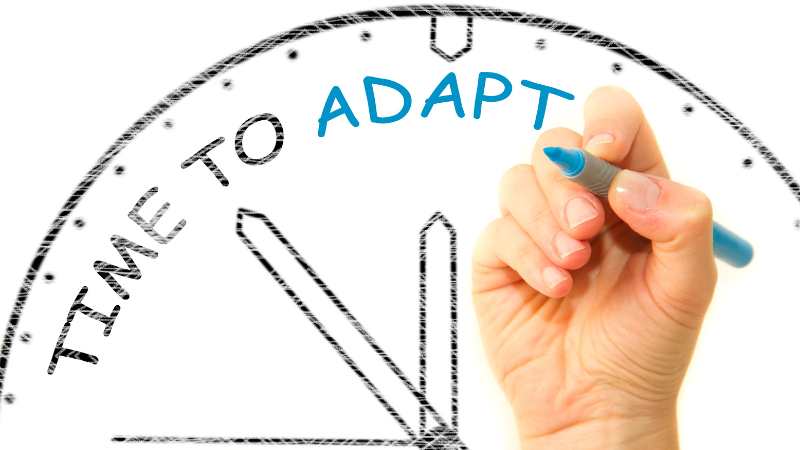Communication is like the glue that holds everything together in the workplace. It’s how we share ideas, solve problems, and get things done. But sometimes, it can feel like we’re speaking different languages. Understanding the different ways people communicate can make all the difference.
That’s why I’m excited to share with you eight powerful communication models.
Each one offers unique insights that can help you connect better with your colleagues, clients, and teams. Let’s dive in and discover how these models can transform your workplace interactions!
What are communication models?
Communication models are frameworks that illustrate how information is sent and received between people. These models help us understand the steps involved in sharing messages, from the sender crafting the message to the receiver interpreting it.
Why do these models matter? They highlight the importance of each part of the communication process, making us aware of potential barriers. By understanding these steps, we can spot where miscommunication might occur and work to avoid it.
Using a communication model can improve our effectiveness as communicators. When we know the typical flow of communication, we can better plan our messages. We can think about who our audience is, what we want to say, and the best way to deliver it.
For example, consider the sender-receiver model. It reminds us to not only focus on what we say but also on how our message will be received. This awareness helps us tailor our words to our audience’s needs and preferences.
Additionally, feedback is a crucial part of communication models. By actively seeking and paying attention to feedback, we can adjust our communication style to be more clear and engaging.
The One-Way Street (Shannon and Weaver Model)
Claude Shannon and Warren Weaver developed this model in the late 1940s. It includes the following elements: sender, message, channel, receiver, and noise.
Imagine you’re sending a message in a bottle across the ocean. You write down your thoughts, seal them in a bottle, and toss it into the waves, hoping it reaches someone on the other side. This is the essence of the One-Way Street model.
It’s all about one person sending a message and another receiving it. Simple, right? But here’s the catch: what if there’s a storm, or the bottle gets lost? That’s the noise interfering with your message.
In the workplace, this could be an email that gets lost in a spam folder or a memo that’s misunderstood because of unclear wording. Knowing this model helps you understand the importance of clarity and the need to reduce noise. Always check if your message is received and understood.
Think of a teacher giving a lecture. The teacher talks, and the students listen. But if a fire alarm goes off, the message gets interrupted. By minimizing distractions and ensuring your message is clear, you can improve your one-way communications.
So next time you send an important email, make sure it’s clear and double-check if it’s received. That’s how you beat the noise and make your message count.

The Ping-Pong Game (Schramm’s Model)
Wilbur Schramm introduced this model in 1954. Its elements include the sender, message, channel, receiver, feedback, and noise.
Now, let’s think about a game of ping-pong. You hit the ball, your friend hits it back. This back-and-forth action is a lot like the Ping-Pong Game model of communication. Here, both people send and receive messages, creating a two-way street.
In the workplace, this model shows the importance of feedback. Imagine you’re giving instructions for a project. You explain the steps, and your colleague asks questions to make sure they understand. This feedback loop ensures everyone is on the same page.
Picture a manager on a video call giving tasks to an employee. The employee asks questions and gives updates. This interaction helps clear up any confusion and ensures tasks are done correctly.
Understanding this model reminds us to seek and give feedback. It’s not just about sending a message; it’s about making sure it’s understood and acted upon.
So next time you communicate, remember to encourage questions and provide clarifications. It’s a surefire way to make your communication more effective and interactive.
The Busy Talkers (Transactional Model)
The Transactional Model, developed by Dean Barnlund in 1970, includes communicators (both sender and receiver), messages, channel, noise, feedback, and context.
Ever been in a lively group chat where everyone talks and listens at the same time? That’s what the Busy Talkers model is all about. Communication here is a dynamic, simultaneous process where everyone is both a sender and a receiver.
In the workplace, think about a team meeting where ideas are flying around. Everyone contributes, reacts, and builds on each other’s thoughts. This model shows how context and noise influence these interactions.
Imagine a brainstorming session at a busy café. Team members discuss ideas while reacting to background noise and each other’s inputs. It’s a chaotic but productive exchange.
Understanding this model helps you appreciate the complexity of real-time communication. It encourages you to be more attentive and responsive, adapting your messages based on the ongoing conversation.
Next time you’re in a meeting, try to listen actively and adjust your responses based on the discussion. It’ll make your interactions smoother and more effective.
The Communication Recipe (Berlo’s SMCR Model)
David Berlo introduced the SMCR Model in 1960. The elements include Source, Message, Channel, and Receiver. Let’s think of communication as a recipe.
The sender is the chef, the message is the recipe, the channel is the oven, and the receiver is the diner. The chef’s skills and the diner’s tastes play a big role in how the dish turns out.
In the workplace, this model emphasizes the importance of the sender’s and receiver’s skills, attitudes, and knowledge. A great message depends on the sender’s clarity and the receiver’s ability to understand.
Consider a coach explaining a new strategy to a team. The coach’s experience and clarity are crucial for the team to grasp the new plan. If the coach communicates well and the team is attentive, the strategy is likely to succeed.
Understanding this model helps you focus on improving your communication skills and tailoring your message to your audience’s needs. It’s about making sure your message is not only sent but also received and understood.
So, when you’re sharing information, think about your audience and adjust your message accordingly. It’ll help you connect better and communicate more effectively.

The Real-Life Chat (Barnlund’s Transactional Model)
Dean Barnlund’s Transactional Model, introduced in the 1970s, includes communicators, messages, channels, feedback, noise, and context.
Communication in real life is like a constant, flowing chat. We send and receive messages all the time, adjusting based on what’s happening around us. This is the essence of the Real-Life Chat model.
In the workplace, imagine a dynamic team discussion. Everyone is talking, listening, and reacting simultaneously. This model shows how context and feedback shape our interactions.
Think of a brainstorming session where ideas evolve based on ongoing feedback. Team members continuously adapt their thoughts and contributions, influenced by the discussion’s flow and context.
Understanding this model makes you more aware of the complexities of real-time communication. It encourages you to be attentive, responsive, and flexible in your interactions.
Next time you’re in a conversation, try to be mindful of the context and feedback. It’ll help you navigate the discussion more effectively and make your communication more impactful.
The Spiral (Dance’s Helix Model)
Frank Dance introduced the Helix Model in 1967, which includes a continuously evolving communication process.
Communication is like a spiral, constantly growing and evolving. This model, The Spiral, shows how our conversations build on past interactions and change over time.
In the workplace, think about ongoing discussions between a mentor and a mentee. Each conversation builds on the previous one, helping the mentee grow and develop.
Consider a student and teacher working on a long-term project. Their discussions evolve, incorporating new insights and understanding. This continuous development is what The Spiral model represents.
Understanding this model helps you see communication as an evolving process. It encourages patience and continuous improvement in your interactions.
So, when you’re communicating, remember that it’s an ongoing journey. Keep building on past conversations and strive for continuous growth and understanding.
The News Filter (Westley and MacLean’s Model)
Bruce Westley and Malcolm MacLean introduced their model in 1957, incorporating the elements of sender, receiver, gatekeeper, and feedback.
Imagine you’re a journalist. You write an article, but before it reaches the readers, it goes through editors who check and modify it. This is the essence of The News Filter model.
In the workplace, this model highlights the role of gatekeepers who filter and interpret messages before they reach the audience. Think of a company’s PR team reviewing messages before they’re shared with the public.
Picture a journalist writing a news article. An editor reviews and changes it before publishing. This ensures the message is clear and suitable for the audience.
Understanding this model helps you appreciate the role of intermediaries in communication. It encourages you to consider potential changes and filters when crafting your messages.
Next time you’re communicating, think about how your message might be interpreted or modified. It’ll help you deliver clearer and more effective communication.

The Circle Talk (Osgood-Schramm Model)
Charles Osgood and Wilbur Schramm developed this model in the 1950s. Its elements include encoders/decoders, message, and feedback.
Communication can be like passing notes in a circle. Everyone takes turns writing and reading, creating a loop. This is what The Circle Talk model represents.
In the workplace, consider a collaborative project where team members continuously exchange ideas and feedback. This back-and-forth ensures everyone is aligned and the project progresses smoothly.
Think of a group project where team members share ideas, give feedback, and refine their plans together. This continuous loop of communication helps keep everyone on the same page.
Understanding this model emphasizes the importance of continuous feedback and mutual understanding. It encourages more collaborative and iterative communication.
So, when you’re working with others, keep the communication loop going. Share ideas, listen to feedback, and keep refining your plans. It’ll lead to better collaboration and results.
Communicate more effectively.
Communication is the key to success in the workplace. By understanding these eight models, you can improve how you share and receive information, making your interactions more effective and impactful.
Remember, whether it’s a one-way message, a back-and-forth exchange, or a dynamic group chat, each model offers valuable insights. So, take these lessons and apply them in your daily conversations.
Your communication skills will improve, and so will your relationships and productivity at work. Ready to take your communication to the next level? Start applying these models today and watch the magic happen!
Read: What is intentional communication?
No posts








